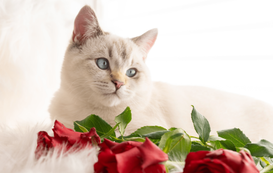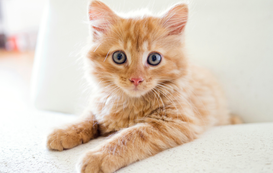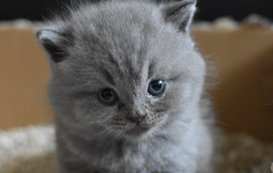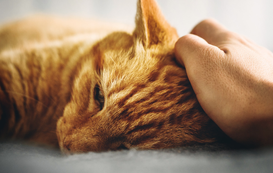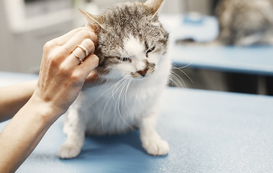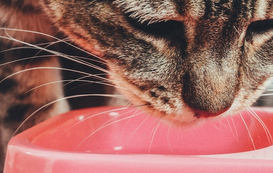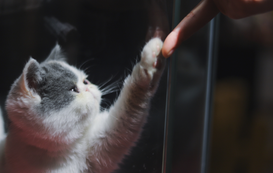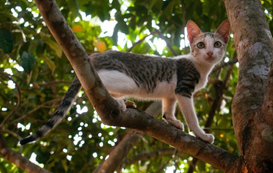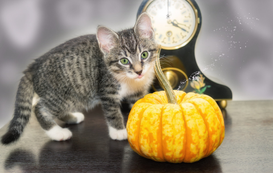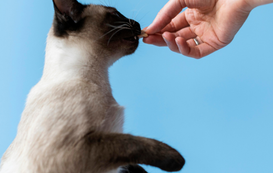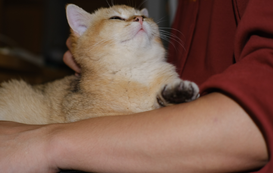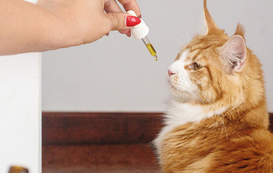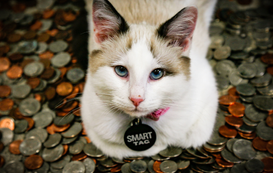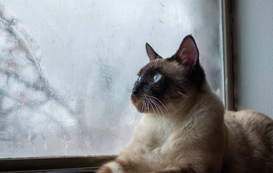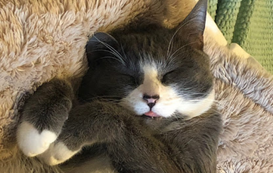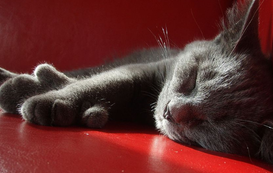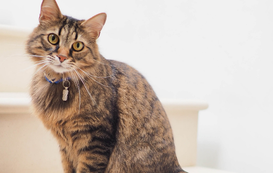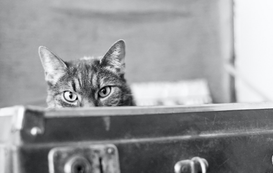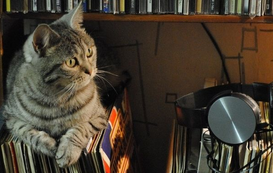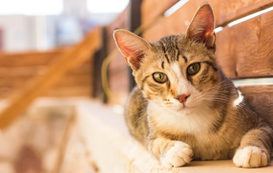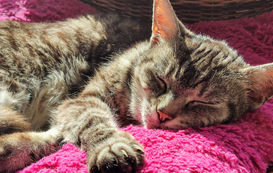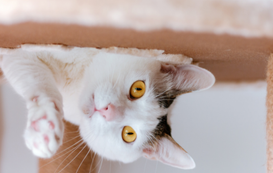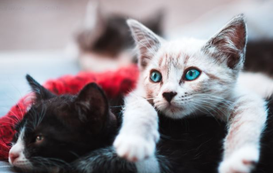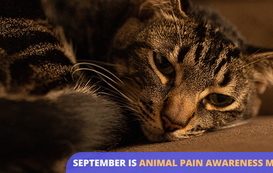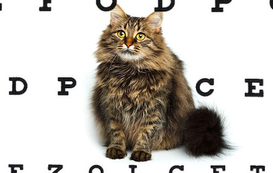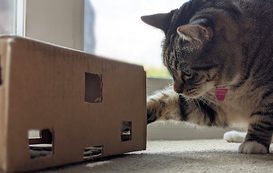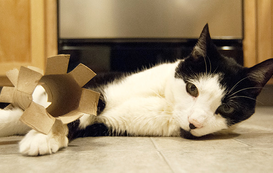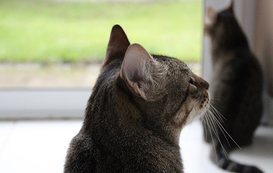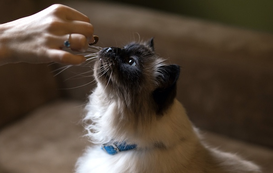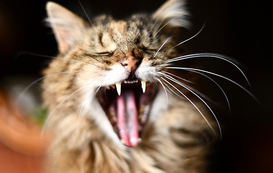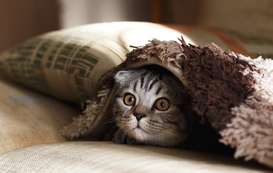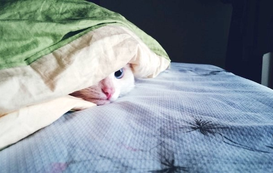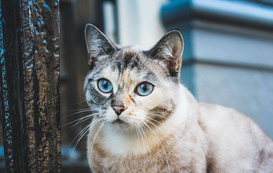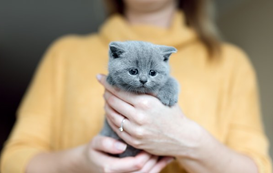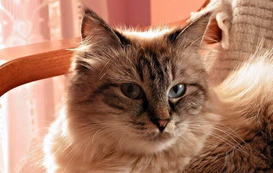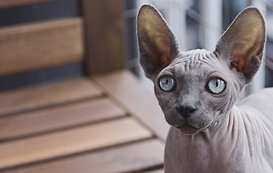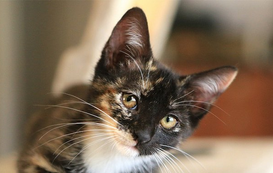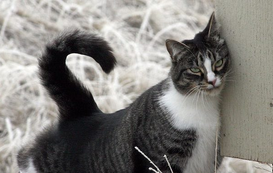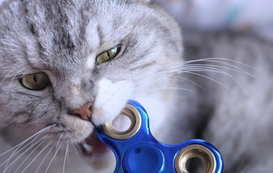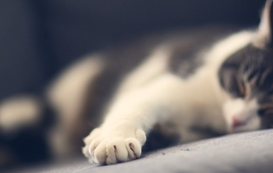- Home
- Cat Sitter Blog
- Cat Breeds
- All About Chimera Cats
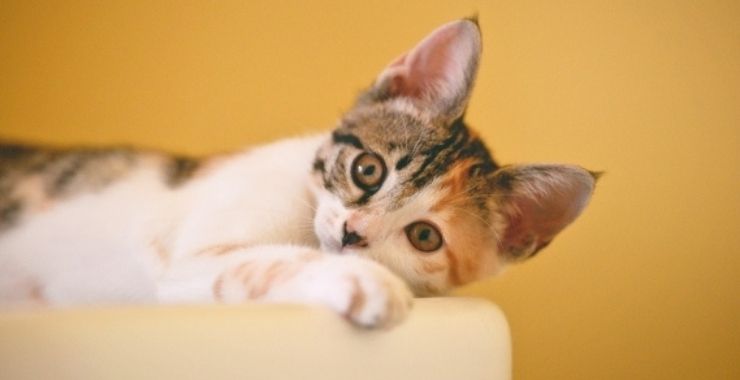

All About Chimera Cats
The Chimera was a terrifying fire-breathing mythological monster that devastated the Greek countryside. She was said to have the head of a lion, the body of a goat, and the tail of a snake.
Everyone knows the Chimera of ancient Greece isn’t a real creature. But did you know there are real chimera cats? Thankfully for us, they’re nowhere near as frightening or dangerous as the mythical beast from Homer’s Iliad. In fact, chimera cats are just as lovable and wonderful as any other kitty you could meet.
When most people think of chimera cats, they probably picture an Instagram-famous cat like Venus, with an amazing color pattern difference running in a straight line right down the middle of her face. One half of her face is black, the other orange. She even has two different-colored eyes!
But there’s a lot more to these fascinating felines than just a pretty face. Keep reading to learn all about chimera cats.
What exactly is a chimera cat?
First of all, chimerism doesn’t just show up in cats. Many other animal species can also produce chimeras, including dogs, mice, monkeys, and even people. A chimera cat is born when two separate embryos fuse together in the mother cat’s womb at a very early stage of development. The new embryo has four sets of parent cells instead of the normal two (one set from mom and one from dad) so it’s basically two genetically distinct cats in one body.
Each original cell population in the fused embryo keeps its own unique DNA sequence. Depending on how the chimera cat’s body develops, entire organ systems can be formed from different cell populations. For example, the uterus could be made up of cells from one of the original two embryos, and the stomach made of cells from the other one. Some chimeras can even have two distinct blood types. Because of these incredible differences, many people describe chimera cats as being their own twin. Crazy, right?
How rare are chimera cats?
Probably not as rare as people think. The most noticeable feature of a chimera cat—its coloring—may not be present at all, or may be so subtle that it goes unnoticed unless you know what to look for.
Interestingly, a professor at UC Davis named Leslie Lyons says that most male tortoiseshell cats are probably chimeras. And the same can likely be said for male calico cats, too.
How is this possible? Let’s back up a bit.
Female cats have two X chromosomes, and male cats have one X and one Y chromosome. The male and female cat each contribute one of their chromosomes to their offspring. The female can only contribute an X. If the male passes on the X chromosome, the kitten will be female (XX). If the male passes on the Y chromosome, the kitten will be male (XY).
The X chromosome is the one responsible for a cat’s fur color, and the genes for calico and tortoiseshell coloring are only carried on the X chromosome. This explains why almost all tortie and calico cats are females.
One way for a male cat to have tortie or calico coloring is for a male kitten to be born with three chromosomes (XXY) instead of two. This rare event happens when the XY chromosomes from the father don’t divide completely during fertilization. This isn’t the same thing as chimerism, however.
But, if two male embryos (XY/XY) fuse together to form a chimera, and each X chromosome carries a gene for a different color, a male cat can wind up with coloring that’s normally only seen in female cats. What a special boy he would be!
Chimeras can be artificially created
Even though chimeras in nature are rare, did you know it’s actually pretty easy to make a chimera in a lab? Virginia Papaioannou, Professor of Genetics and Development at Columbia University, says she does it all the time with mice. She starts by recovering two embryos before they’ve implanted in the uterus, when they’re each just a few cells big. A nonliving outer coating around the embryos has to be removed, but once that’s gone they can more easily be physically joined together. Then the super-sized new embryo is re-implanted in the mama mouse’s uterus and allowed to develop normally.
How can I tell if my cat is a chimera?
The short answer is, only through DNA testing. Anything else is just guessing. If you’re dying to find out whether your cat is a chimera, or just want to know more about his ancestry, you can order a DNA test kit for your furry friend from a company called Basepaws for less than $100.
In spite of how striking “split-faced” cats are, and how much they can look like two different cats in one body, torties and calicos with half-black and half-orange faces aren’t necessarily chimeras. The color pattern can also be caused by mosaicism. In a mosaic cat, two different genotypes develop within a single fertilized egg. This is basically the reverse of a chimera, where two separate fertilized eggs fuse into one. Mosaicism can be caused by a gene or chromosome mutation during development, or when one of the female cat’s X chromosomes are randomly switched off.
If you see a kitty with heterochromia (two different-colored eyes) this also doesn’t automatically mean you’re looking at a chimera cat. Cats are born with blue eyes, which basically means there’s a lack of pigment in the iris. Kittens’ eyes gradually change color a few weeks after they’re born. The same gene that causes a cat to have white fur also controls eye color, and most “odd-eyed” cats are either white or have white fur somewhere on their bodies. After a kitten is born, melanin begins to move into the iris and changes her eye color from blue to either brown, green, or yellow. But sometimes this only happens in one eye, and the other one stays blue permanently.
Sometimes a cat can actually be a chimera, even though they look just like an ordinary, average kitty. How could this be? Well, if a pair of purebred white Persians with green eyes breed, and two of the embryos happen to fuse together in the womb, that kitten will be born looking just like all the rest of his siblings—white Persians with green eyes. His secret would only be revealed through DNA testing.
So there you have it! Chimera cats as we know them today aren’t anything close to the horrible monsters of ancient Greek mythology they were named after. They’re much more likely to curl up in your lap for a nap than to rampage through the countryside (but if you don’t hide the catnip well enough, they might rampage through the cabinets).
At Meowtel, we think cats of every stripe deserve only the very best. So the next time you have to leave your one-of-a-kind kitty at home, book one of our trusted sitters to provide them with care and attention that’s as special as they are.
Photo by Cong H via Unsplash





